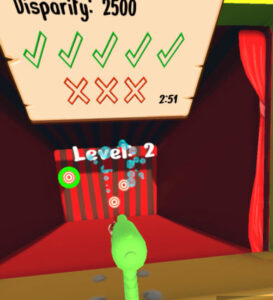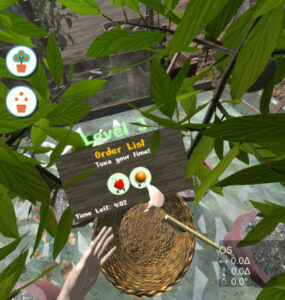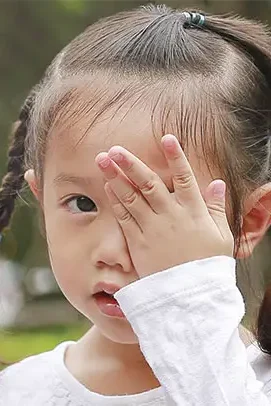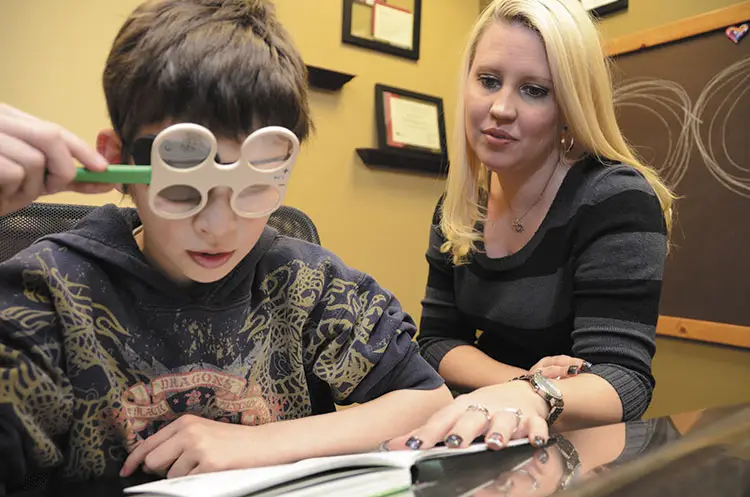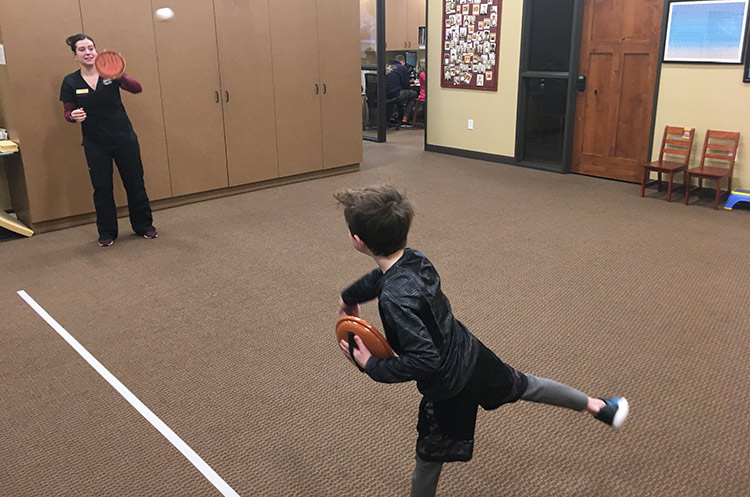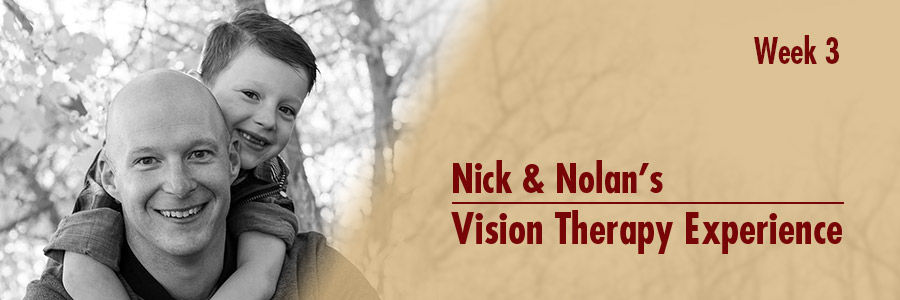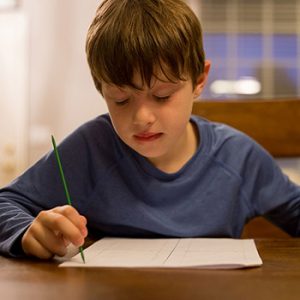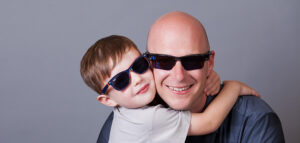VISION IS THE BRAIN’S WAY OF TOUCHING
Why can we help so many seemingly various conditions with Vision Therapy? It’s all about the eye-brain connection.
Vision is a Learned Skill

Vision is a learned skill that develops along with other skills as a baby grows. Movement and vision are significantly interrelated and the development of vision has to do with the types and varieties of experiences a child has.
It is important to remember that the eyes are part of the brain system. The eyes “see” but the brain “interprets.” A person can have 20/20 eyesight, which measures visual acuity at a distance, and still have a visual skills problem making near work — like reading, writing, or using a computer — extremely difficult. In fact, seeing 20/20 is just one of 20 visual skills necessary to succeed in reading, learning, sports, and in life.
20 Visual Skills
SEE THE 20 VISUAL SKILLS REQUIRED FOR GOOD VISION.
CHILDREN WITH VISUAL SKILLS PROBLEMS

Most visual skill deficiencies reveal themselves when a child enters school because the learning environment is increasingly more demanding of young learners. One out of four children have undiagnosed vision problems. If you’ve ever heard a parent say, “My child is so smart but still, he struggles in school and every day, homework is a battle!” you are hearing a common pain felt by parents of kids who have undiagnosed vision problems. The truth is, once the visual barrier is removed, these kids love school and love to learn.
ADULTS WITH VISUAL SKILL DEFICIENCIES

Adults who have managed to graduate high school in spite of a vision skills problem may not pursue college or may drop out early because the demanding workload for reading is just too much. These incredibly smart adults become very skilled at avoiding reading in their personal life as well as at work — and it’s no wonder when reading can be physically painful and exhausting for them! When you consider how few jobs there are that do not include working on a computer, it is easy to see why an adult who suffers from a vision skills problem may have limited career choices and growth opportunities. Learn more about how we help adults with visual skill deficiencies.
REFINING VISION SKILLS: COLLEGE STUDIES

Because good vision is a learned skill it is also a skill that can be enhanced. High school graduates who want to optimize their reading and comprehension efficiency can benefit from Vision Therapy. Our customized programs prepare college students in a way that no other type of college-prep can: By enhancing the eye/brain connection. When visual efficiency, comfort, and stamina is at it’s peak, students can learn faster, easier, and work longer more comfortably than ever before. These skills support learning while in school and professional success for a lifetime.
REFINING VISION SKILLS: SPORTS

Sports Vision Training is a secret weapon of professional athletes that they never talk about. As you know, the skills difference is very small between successful athletes and those who don’t make the cut so fine-tuning all areas of play is critical.
Further developing vision skills improves:
- reaction time
- focusing speed
- eye tracking
- peripheral awareness
- visual processing speed
- eye/hand coordination
- and clutch concentration
We have helped high-school students improve their sports performance to levels that allow them to receive scholarships for college and then move on to pro teams. We have helped aspiring young athletes early in their sports career gain an edge in their performance. We even help weekend warriors improve their game just for bragging rights. Whatever level you play, Sports Vision Training will give you an edge.
BONUS: Athletes that complete our Sports Vision Training also report improved learning and performance in the classroom as a result of improved visual skills.
BRAIN INJURY REHABILITATION

When you understand the vital connection between the eyes and brain for seeing, comprehension, and coordination it is easy to realize how a traumatic brain injury, such as a stroke or concussion, can disrupt or distort the flow of information from the eyes to the brain. When vision problems due to a brain injury go untreated, the rehabilitation process can be adversely affected. It is absolutely imperative that any rehabilitation program includes a thorough evaluation of the performance of the visual system.
Ready to Schedule An Appointment?
The Highline Vision Center team is looking forward to seeing you soon. Our practice utilizes state-of-the-art technology to deliver personal and comprehensive eye care for your entire family.




